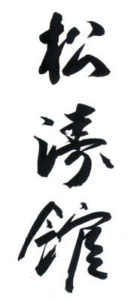Background
I have practiced Wado Ryu about 5 years in Sweden.
finished with orange belt working for green. But for problems with stress and my left knee, I had to stop sometimes after 2003.
Now in autumn 2019, I have started from the beginning with Shotokan Karate in the Karate academy on Lipari, Aeolian Islands, Italy.
I will build site this site in a similar way as the html site I created years ago about Wadoryu karate. Click here to open it.
 |
About KataKata (Japanese: ?, or more traditionally, ?; lit. “form”) is a Japanese word describing detailed patterns of movements practiced either solo or in pairs. (Source: Wiki) Kata were probably developed as solo forms in China and later on Okinawa, to learn and remember the many useful attack and defence drills. Chinese kata
( Source: www.thekaratelifestyle.com ) Development of kata on OkinawaChinese martial artists teached hundred of years ago the Ryukyu Kingdom (today called Okinawa) native aristocrats, the so called Yukatchu. Two events that triggered the development of Karate
These two events made the Yukatchu deepen their Karate technique with visits in China and letting the Ryukyu natives train karate in secret with farming tools as weapons ( Read more in www.thekaratelifestyle.com ) There are many Katas.A nice table with all the Katas in available here. About mastery and kata‘Some falsely believe that mastery and progress comes Otsuka Sensei |
Why Kata?
Martin Jutras explains it well on his site
www.thekaratelifestyle.com
A Sensei explains it well this youtube
Six principles for Kata
- The cata must be alive with emotion and determination
- Act with empathy
- Apply varied strength, sometimes strong, sometimes soft.
- Perform at different speeds, sometimes fast, sometimes slow
- The breathing must be rhythmic
- Balance must be maintained throughout Katan